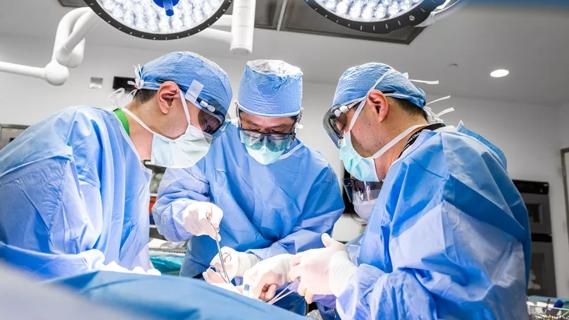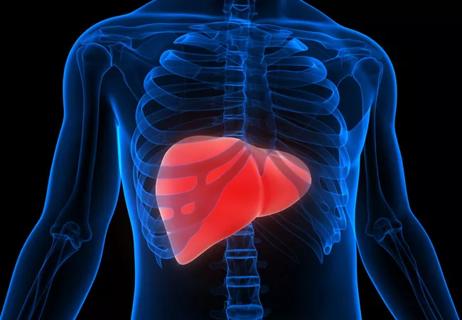James M. Church, MD, a colonoscopist and surgeon with Cleveland Clinic for 30 years, is studying a trend that he and his colleagues find both alarming and perplexing: a steady yearly upsurge in the incidence of colorectal cancer (CRC) in the under-50 population.
Cleveland Clinic is a non-profit academic medical center. Advertising on our site helps support our mission. We do not endorse non-Cleveland Clinic products or services. Policy
The American Cancer Society studied 500,000 young people and found between 0.5 to 2.0 percent increases in colon cancer each year for the past several decades. Rectal cancer has risen more sharply, at 3 percent per year for those aged 20-40 and 2 percent for the 40-54 demographic. At the same time that these rates rise, CRC in the over-50 demographic continues to drop, due in large measure to better education and adherence to colonoscopy screening and polyp removal.
Dr. Church isn’t willing to let the trend lie unaddressed. “I’m intrigued, because I can’t explain it, and I’m a doctor and I like to explain things. It makes me really want to solve it.”
CRC develops in one of two ways. The more common way, responsible for 90 percent of rectal cancers and 60 percent of colon cancers, is from an accumulation of mutations that degrade cells’ ability to regulate growth and development. These cells grow faster and live longer than normal, building up as polyps. Continuing mutations within these unstable cells finally leads to a cancerous spread into and through the bowel wall, and to other organs.
Other cancers originate with methylation, a biochemical change that affects genes in a way that destabilizes cell growth, making patients prone to a different kind of polyp. Methylation is responsible for one-third of right-sided cancers and almost no rectal cancers. Some methylation is normal in youth, but increases with age.
Dr. Church and colleagues theorized that methylation-type cancers (which are mostly on the right side of the colon), would be rare in young people and so unlikely to factor significantly in the increased CRC among younger patients. Logically, then, more cancers in young patients would be on the left side of the colon, compared to older patients.
Because this would have important implications for screening, they planned a study to test this hypothesis.
To this end, Dr. Church and colorectal surgeon Matthew Kalady, MD, conducted the largest single institution retrospective study to date of CRC patients under 50. They presented results at the 2017 American Society of Colon and Rectal Surgeons annual meeting, as well as their recommendation for flexible sigmoidoscopy starting at age 40, for patients at average risk.
They examined the records of their CRC patients between the years 2000 – 2016, whose cancers were diagnosed under age 50. Excluding those with inflammatory bowel disease, familial adenomatous polyposis or Lynch syndrome, the number came to 739.

Figure 1. Cancer location by age for CRC patients studied
This study represents the largest single institution cohort to date of CRC under the age of 50. What they found was a resounding 83 percent of the cancers were on the left side of the colon, putting them potentially within range of flexible sigmoidoscopy.
The regional distribution of cancers was:
485 rectum (65%)
107 sigmoid colon (15%)
19 descending colon (3%)
128 right colon (17%)
Further, they found that 71 percent of the 739 patients were diagnosed between the ages of 40-49, supporting a case for screening efforts focused on the 40-50 year old population.
Widespread colonoscopic screening for people under 50 who don’t have inheritable cancer risks is simply not on the horizon, for logistical and financial reasons. The numbers aren’t high enough to justify the expense within our healthcare system or assure significant patient adherence. However, Dr. Church suggests that “at the very least, this study, along with smaller ones with similar findings, makes the case for doing clinical trials with flexible sigmoidoscopy screenings of larger populations, toward the goal of supporting broad protocol changes for CRC screening.”
Flexible sigmoidoscopy is like colonoscopy of the left side of the colon. It is significantly less expensive than colonoscopy, requires minimal prep (two enemas), no sedation, and can be performed quickly and easily on younger people due to their healthier, more navigable colons. It could also be performed by nurse endoscopists, if the U.S. were to develop this profession, common in Great Britain.
He recommends that low-to-average-risk patients have this screening at 40 and again at 45, with colonoscopy beginning at 50, per the current recommendation. (Higher risk patients should be continue to be screened with colonoscopy at younger ages.)
In addition to screening, Dr. Church strongly recommends younger patients and their PCPs take extra precaution to assure quick follow-up on symptoms, particularly rectal bleeding.” In young patients with colorectal cancer the interval between onset of symptoms and diagnosis averages six months. This is way too long!” Furthermore, healthcare providers must be faithful in taking a family history of colorectal cancer so that this high-risk factor can be identified.
Ten to 11 percent of all cancers develop when a person is under 50 years old. “CRC is a particularly preventable one. All CRC starts as a polyp, and if we can see it we can remove it and remove the cancer risk. If this requires something as simple as a 20-minute exam, I think it is well worth pursuing.” Dr. Church continues, “Every patient with colorectal cancer who comes into my office represents a failed opportunity at prevention. And it just drives you crazy, especially if the patient has a family history,” he laments. “All so unnecessary. Then you see the young people coming in and it’s worse, because they have young families.”
“I’ve made a career around the use of colonoscopy in screening and prevention of colorectal cancer along with, of course, managing the cancers I find,” he reflects. “I am hoping our research leads to larger screening trials soon.”

Careful risk stratification is key

Findings support the safety of the technique

Insights from murine models could help guide care for patients

Reviewing how the drug can be incorporated into care

Largest, longest analysis to date shows greater weight loss and fewer diabetes medications needed

The importance of raising awareness and taking steps to mitigate these occurrences

New research indicates feasibility and helps identify which patients could benefit

Standardized and collaborative care improves liver transplantations